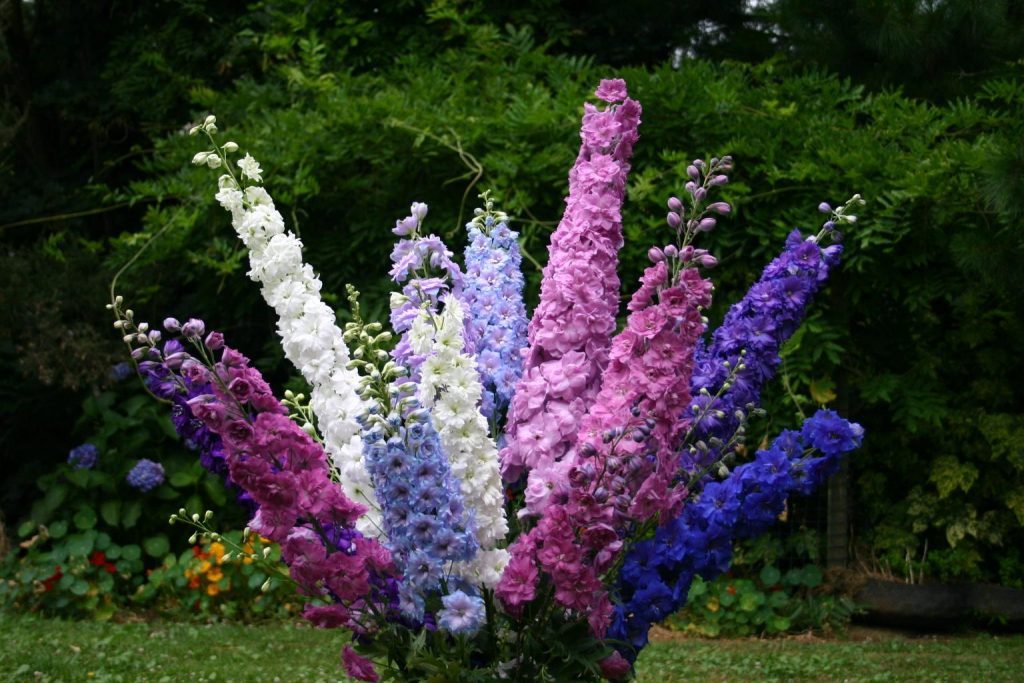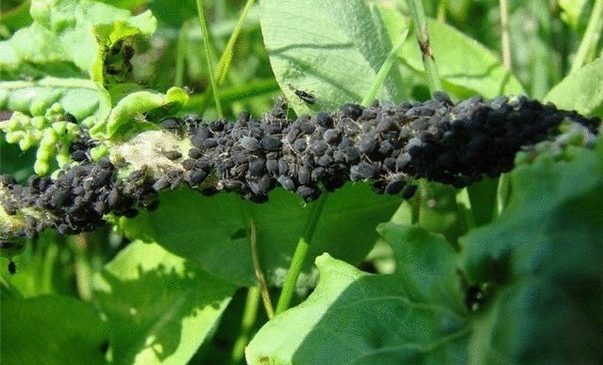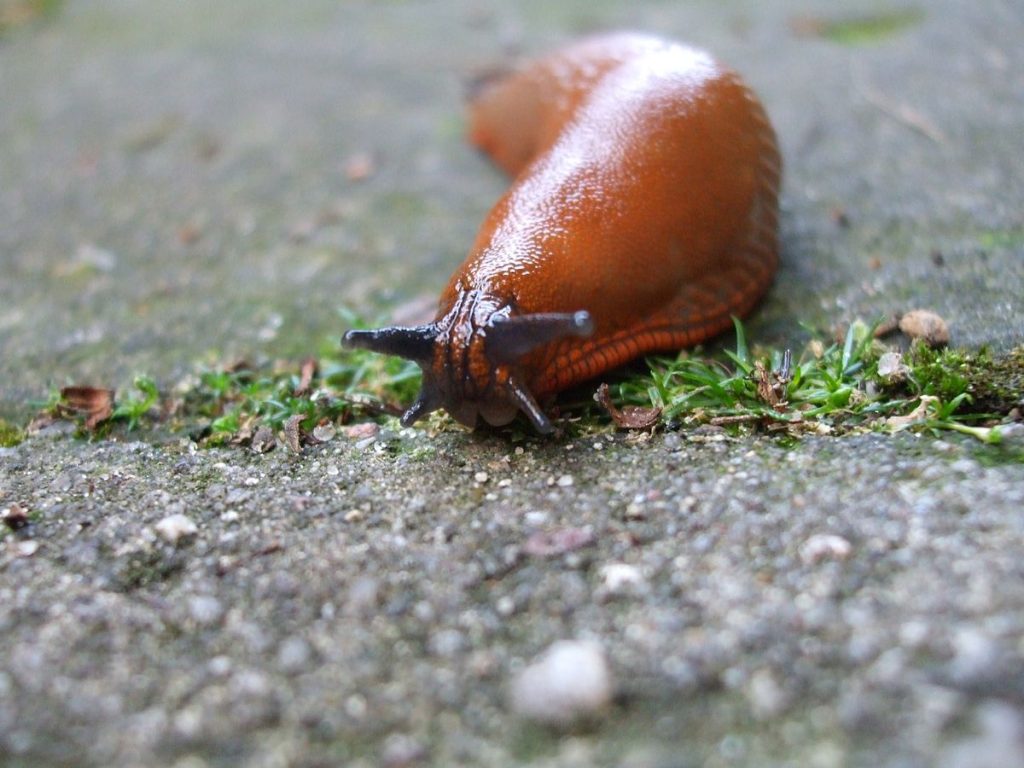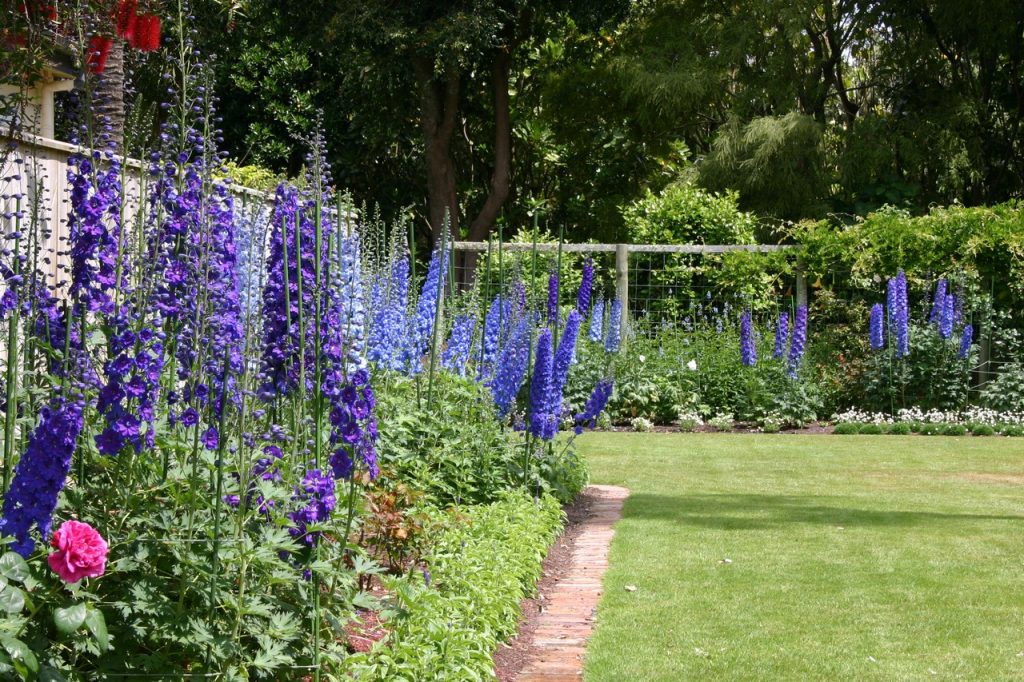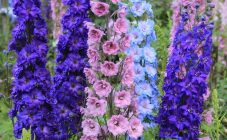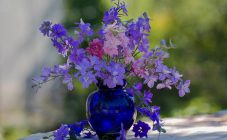Content:
Delphinium is a flower from the Buttercup family, it is very beautiful, which is why it is quite common. It is a bushy flower with stems reaching 3 meters in height. All its stems are abundantly shrouded in large and bright flowers, so many decorate their garden plots with it. It is unpretentious, quite resistant to frost and drought, but pests and diseases often affect this flower.
Signs of damage to the delphinium by pests and diseases
The flower of this species is often attacked by viruses, bacteria and fungi. The main reason for the development of diseases is a change in weather conditions, garden crops are more susceptible to diseases in rainy and damp weather. Weeds and insects are also carriers of many diseases.
First of all, weak bushes are exposed to negative effects. They turn yellow, darken, begin to dry out or they are covered with mold, it all depends on the type of disease that has affected the delphinium bushes.
The reason why the lower leaves of the delphinium turn yellow, and the inflorescences acquire the shape of a bundle, is astral jaundice. It is carried by insects.
If the leaf or stem begins to become covered with dots (they can be orange, yellow and brown), the flower is affected by ring spot or celery or tobacco mosaic. With bacterial wilting, yellowness first covers the lower leaf, then black spots appear on the stem. If it turns black, it is most likely hit by a black spot. And from powdery mildew a grayish-white bloom appears on it.
Similar signs also appear when the flower has been exposed to pests. Flies, ticks, aphids, slugs and other insects feed on stems, buds and roots, and also lay larvae, which is why the leaves of the delphinium curl and fall off.
What does this type of garden culture most often suffer from?
Basically, a plant of this species suffers from:
- Powdery mildew. This is a fungal disease that affects almost all horticultural crops. A delphinium affected by powdery mildew changes greatly in appearance, the leaves are covered with a white or gray bloom. Over time, the white and gray bloom on the delphinium disappears, but after that the bushes turn brown or brown. And if measures were not taken on time, the bush will completely wither until autumn. The main cause of infection is sick grass that is nearby. Most often, all garden plants are infected with powdery mildew from weeds. Its spread increases in wet weather, so the risk of infection is especially high during the heavy rainy season. If powdery mildew was found on the delphinium, you need to know exactly how to get rid of it. Chemicals further weaken it, making it vulnerable to other adverse factors: drought, excess moisture, etc.
- Aphids. These insects feed on flowers and buds of many plants. If the bush is affected by aphids, it can be easily replaced on the stems and under the buds. The cause of plant damage by aphids is the presence of an anthill nearby.
It is from powdery mildew and aphids that this culture most often suffers. Horticultural crops affected by disease and insects stop blooming and eventually die off completely.
What to do if the flower is sick
To save the delphinium, diseases and treatment must be carefully studied and acted upon at the first sign of infection. If the stems and leaves of the flower have changed - spots appeared on them or the leaves began to fall off for no reason - you need to take a closer look. Basically, the disease begins to spread from below, affecting first the lower leaves and the lower part of the stem. If signs of a disease are detected, action must be taken immediately, since ignoring the problem leads to the fact that the culture can completely dry out.
If signs of powdery mildew were found, the entire garden plot should be treated with foundation or Topaz.
If the reason why the delphinium turns yellow and fades is astral jaundice, you will have to completely remove the entire yellowed stem along with the root. In this case, it is imperative to burn all the leaves and stems, since insects act as carriers of this disease, which lay the larvae in the roots and it is completely impossible to remove them. Powdery mildew and aster jaundice on delphinium are quite common, so it is important to be careful about growing a flower, because these diseases are difficult to cure.
When signs of black spot are found, it is necessary to find out at what stage the disease is. If a culture has just got sick or has been sick for a relatively short time, it can be saved. To do this, spray it with tetracycline a couple of times at short intervals. Before processing, you should remove the yellow stem, affected leaves and buds, after which you need to burn them.
A crop affected by ring spot cannot be cured, therefore it and the nearby weeds must be dug up and burned.
When processing infected bushes, it is important to observe the measure, it is always indicated on the package. If the measure is not followed, the bush will also suffer from the effects of chemicals.
How to deal with pests
Pests affect not only flowers and leaves of bushes, they also spoil the root system, which is why the delphinium dries. Also, from the action of insects, the plant can turn yellow, leaves affected by insects curl and begin to dry from the middle, also many insects lay eggs in the roots, the larvae feed on them. Therefore, pests are as dangerous as diseases. If they are not removed in time and the site is not processed, the delphinium dries up and withers, what to do in such a situation depends on which insect is terrorizing the garden.
To treat the area from the delphinium fly and its larvae, a therapeutic solution of 10% prometrine is used.
If the garden crop suffers from aphids, the affected bush is treated with soapy water or tobacco infusion. Alternatively, you can buy insecticides at specialty stores.
Slugs can be fought with regular lime. To do this, you need to scatter it throughout the garden area. Alternatively, you can treat the flowers with superphosphate or granular metaldehyde.
It will not work to save flowers from the meadow nematode. It can only be avoided by taking preventive measures.
Prevention
Pest and disease control is a rather long and complicated procedure. Sometimes it is impossible to completely remove pests and prevent the crop from drying out due to illness, you have to completely destroy the plant. To avoid this, prevention should be carried out:
- To do this, you do not need to flood the garden plot often, this provokes the occurrence of fungal infections.
- It is important to remove all weeds near the bushes. They are the carriers of many diseases.
- If you find anthills, you need to get rid of them immediately, as they can lead to damage to the plant by aphids.
- Faded flowers, as well as broken leaves and stems must be constantly removed.
- Sometimes all flowers on the site should be sprayed with soapy water.
- Before planting seedlings in open ground, it is important to completely clear the area by removing all branches and leaves.
- It is important to regularly and carefully inspect the plants in order to timely identify signs of pest exposure or disease damage to the flower.
If you take proper care of your garden, the risk of contamination of plants with various diseases is very low. Therefore, it is important to carry out all procedures in a timely manner. If the plant is cut, watered and processed on time, it will bloom and delight the summer resident all season.
Gardening tips
To avoid infection and damage to the flower, you should adhere to the following rules:
- In June and July, it is imperative to spray the entire area with soapy water.
- Every month a couple of tablespoons of tobacco dust should be scattered over the area. Many insects cannot tolerate it.
- Cut off damaged bushes completely.
- It is desirable to carry out processing during the budding period.
- In order not to poison the plant with chemicals, it is better to collect slugs by hand.
These tips will help you fight many diseases and pests.
Summer residents spend a lot of time and energy on ennobling their garden plot, but pests and diseases negate all efforts. To find out what affects the plant, you should first read the description of the signs of various diseases. Having found a yellowing of a bush or finding a blackened leaf, you must immediately begin to treat the infected bush. Otherwise, you will have to get rid of the whole species later. Action is required immediately if pests are found. Before processing, you should find out why the leaves of the delphinium turn yellow or why it withers and dries up. The entire area should be treated, not just the affected species. It is also required to carry out several procedures, and not one. Especially if insects and their larvae were found.
